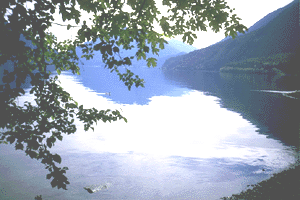Guwahati
(The Gateway to North-East)
(The Gateway to North-East)

The name of this rapidly-growing city that is also the largest in the North- East, is apparently derived from "Guwa" (or betel-nut) and "Hatt" (meaning market). Apparently, the place was a bustling, prosperous market which attracted traders from the surrounding hills and from nearby valleys to its environs. And it was not just betel-nut that the market was famed for, though these graceful trees, which look like "arrows shot down from heaven' in the words of a visitor here, are still very much in evidence in the suburbs of the city. However, though the present name of the city denotes a practical aspect, the city itself, under different names, has had a long and glorious history. References to it, as well as descriptions of it, are to be found in the Hindu epics, as well as in the accounts of travellers of various eras. As "Pragjyotishpura" it was the "light of the East". It was a revered centre of Tantric worship. The continuing archaeological excavations at Ambari, in the heart of the city, speak of a flourishing civilization, advanced culturally as well as materially. It is the city built by the demon king Narakasura, and as such it is also a magical city. It is the place where the Mongoloid peoples from the east have met with Aryans from the west, and mingled with the Austro-Dravidians. Anthropologically, therefore, the faces seen in the city are an absorbing mix of many races.
Guwahati is the gateway to places of beauty and interest such as Meghalaya, Arunachal Pradesh, Nagaland, Kaziranga, Manas and so on. However, it is much more than merely a gateway : in its own right, it is a place of interest, with varied offerings for the tourist to the city. The first aspect of the city that strikes the visitor is the natural beauty of the place. It is ringed around on three sides by a chain of hills that stretches to the horizon. The northern side is bounded by the awesome Brahmaputra. A sight of this turbulent river at the height of the monsoons is a wonderful sight. There is lush green vegetation everywhere. Indeed, the luxuriance of the plant-life here is uniquely rich and verdant.
One of the greatest plus-points of the city is that it has not yet become 'touristy". What it lacks in tourist infrastructure is therefore more than made up for by the fact that there no cheats to fleece the unwary traveller, no importuning touts to bother him. Of course there are a large nwnber of comfortable and reasonably-priced hotels and rest-houses in the city. Bus services are good. Rickshaw rides are an adventure in themselves, while autorickshaws, though compar- atively expensive, are a convenient mode of transport. And the people are warm-hearted, hospitable and very helpful to tourists still. Guwahati and environs are dotted with numerous places of worship. Foremost among these is the Kamakhya temple, atop the Nilachal hill near the western rim of the city. Mention of this Important shrine is made in ancient treatises. It attracts pilgrims from all over the country, especially during the 'Ambubashi" that occurs at the height of the monsoons in June. At the very peak of the hill is the "Bhuwaneshwari" temple. The architecture of both these temples, the rites and rituals associated with Tantrism which have an important seat here, are of absorbing interest to the visitor. However, even those who are neither religiously inclined nor archaeologically minded, often drive up to the top of the hill for a breath taking view of the city below, the curve of the river ahead, and the blue hills stretching hazily away to the horizon beyond. The sunset on the river, seen from this vantage point, is simply glorious. Another important temple is the Navagraha temple, also atop a hillock near the centre of the city. It is an ancient centre for the study of astrology and astronomy, and is dedicated to the nine planets.